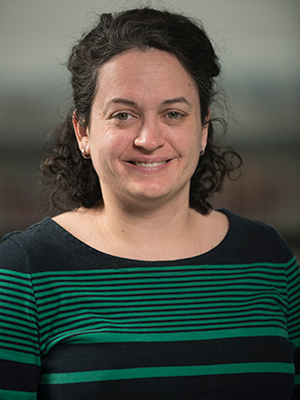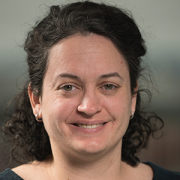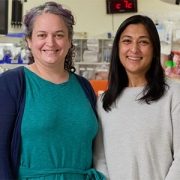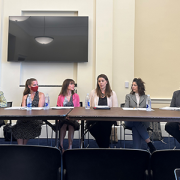Firearm injuries disproportionately affect African American kids in DC Wards 7 and 8

“Because the majority of patients in our analyses were injured through accidental shootings, this particular risk factor can help to inform policy makers about possible interventions to prevent future firearm injury, disability and death,” says Katie Donnelly, M.D.
Firearm injuries disproportionately impact African American young men living in Washington’s Wards 7 and 8 compared with other city wards, with nearly one-quarter of injuries suffered in the injured child’s home or at a friend’s home, according to a hot spot analysis presented during the Pediatric Academic Societies 2019 Annual Meeting.
“We analyzed the addresses where youths were injured by firearms over a nearly 12-year period and found that about 60 percent of these shootings occurred in Ward 7 or Ward 8, lower socioeconomic neighborhoods when compared with Washington’s six other Wards,” says Monika K. Goyal, M.D., MSCE, assistant chief of Children’s Division of Emergency Medicine and Trauma Services and the study’s senior author. “This granular detail will help to target resources and interventions to more effectively reduce firearm-related injury and death.”
In the retrospective, cross-sectional study, the Children’s research team looked at all children aged 18 and younger who were treated at Children’s National for firearm-related injuries from Jan. 1, 2006, to May 31, 2017. During that time, 122 children injured by firearms in Washington were treated at Children’s National, the only Level 1 pediatric trauma center in the nation’s Capitol:
- Nearly 64 percent of these firearm-related injuries were accidental
- The patients’ mean age was 12.9 years old
- More than 94 percent of patients were African American and
- Nearly 74 percent were male.
Of all injuries suffered by children, injuries due to firearms carry the highest mortality rates, the study authors write. About 3 percent of patients in Children’s study died from their firearm-related injuries. Among surviving youth:
- Patients had a mean Injury Severity Score of 5.8. (The score for a “major trauma” is greater than 15.)
- 54 percent required hospitalization, with a mean hospitalization of three days
- Nearly 28 percent required surgery, with 14.8 percent transferred directly from the emergency department to the operating room and
- Nearly 16 percent were admitted to the intensive care unit.
“Regrettably, firearm injuries remain a major public health hazard for our nation’s children and young adults,” adds Katie Donnelly, M.D., emergency medicine specialist and the study’s lead author. “Because the majority of patients in our analyses were injured through accidental shootings, this particular risk factor can help to inform policy makers about possible interventions to prevent future firearm injury, disability and death.”
Pediatric Academic Societies 2019 Annual Meeting poster presentatio
- “Pediatric firearm-related injuries and outcomes in the District of Columbia.”
- Monday, April 29, 2019, 5:45 p.m. to 7:30 p.m. (EST)
Katie Donnelly, M.D., emergency medicine specialist and lead author; Shilpa J. Patel, M.D., MPH, emergency medicine specialist and co-author; Gia M. Badolato, co-author; James Jackson, co-author; and Monika K. Goyal, M.D., MSCE, assistant chief of Children’s Division of Emergency Medicine and Trauma Services and senior author.
Other Children’s research related to firearms presented during PAS 2019 includes:
April 27, 8 a.m.: “Protect kids, not guns: What pediatric providers can do to improve firearm safety.” Gabriella Azzarone, Asad Bandealy, M.D.; Priti Bhansali, M.D.; Eric Fleegler; Monika K. Goyal, M.D., MSCE; Alex Hogan; Sabah Iqbal; Kavita Parikh, M.D.; Shilpa J. Patel, M.D., MPH; Noe Romo; and Alyssa Silver.
April 29, 5:45 p.m.: “Emergency department visits for pediatric firearm-related injury: By intent of injury.” Shilpa J. Patel, M.D., MPH; Gia M. Badolato; Kavita Parikh, M.D.; Sabah Iqbal; and Monika K. Goyal, M.D., MSCE.
April 29, 5:45 p.m.: “Assessing the intentionality of pediatric firearm injuries using ICD codes.” Katie Donnelly, M.D.; Gia M. Badolato; James Chamberlain, M.D.; and Monika K. Goyal, M.D., MSCE.
April 30, 9:45 a.m.: “Defining a research agenda for the field of pediatric firearm injury prevention.” Libby Alpern; Patrick Carter; Rebecca Cunningham, Monika K. Goyal, M.D., MSCE; Fred Rivara; and Eric Sigel.










